
Disney Parks and soft globalization
Disney Parks can be found all over the world and they are found to be adapting to the different settings they are in. These adaptations can be better understood through the concepts of soft globalization and culture scapes in Appadurai's (1996) sense. In this article, I will show that there are three main forces influencing the Parks' overall appearance and content: Disney and all that it entails, American culture and local cultures. These three factors must be brought to a balance for the company to be successful.
Without going in-depth into the economic aspects of the globalization of Disney Parks, I will ask why Disney has to adapt its parks when spreading globally. The reasons for this are inherently economical. Yet, these economic reasons are tied to cultural differences, as we will see through the examples of the openings of Disneyland Paris and Hong Kong Disneyland. Both of these venues exemplify cases where the three previously mentioned forces were not balanced, which resulted in financial struggles and backlash. We will also explore what elements index "Disney-ness" as this is another force of influence on the Park's products. In other words, what makes Disney Parks feel particularly "Disney". Lastly, I will analyze the specific adaptations Disney has made to its Parks and it will be established that Disney Parks constitute a culture scape. This will show that the theory of soft globalization is a fitting frame for understanding Disney Parks.
Disney Parks and success by adaptation
Different cultures have different practices and normalities. This causes certain signs to carry variable meanings dependent upon their location and the people present at this location. This is obviously true on a small scale. Take a national flag near a government building in comparison to one near a private home, for example. The former signifies that this is a building owned by the government while the second means "I like the country whose flag is depicted". However, the same paterns of meaning-making can also be found on a larger scale. Take a national flag either in the US or in Europe as an example. A difference here is that it is not just the location that changes the meaning, but also the people who must interpret the meaning. In the USA, the flag might be seen as a sign of patriotism, while in Europe it might be seen more negatively as signifying nationalism. This is because the people that need to interpret the flags have a different frame of reference or contextualizing universe.
Signs, in this case, can be more than literal signs. Here I view signs as any sensory input meant to convey meaning or to communicate something. This mostly applies to Disney in its theming and literal signage. These can have both referential and indexical meaning. That is, there is a literal meaning the signs are trying to convey (referential meaning), but also the dimension of what they implicitly mean (indexical meaning). Both referential and indexical meanings can be different depending on the cultural contexts they appear in. Because a new audience's contextualizing universe is different, this new audience will not infer the same meaning as the original audience.
This can easily lead to misunderstandings. These misunderstandings are what led to the failure of Euro Disney, which faced financial struggles before being rebranded as Disneyland Paris. This failure shows that Disney cannot simply only globalize their idea. They must adapt and localize the attractions and signs to make them successful, as they are placed in a different context. Disney was not willing to do this at first, and therefore the opening failed. Much of the criticism focused on the American-style food and entertainment options. These were things many Europeans did not understand. If Disney would have adapted its Park for European audiences initially this would not have been a problem.
The local and the global aspect must be in a balanced relationship
This also seemed to be true in the case of Hong Kong Disneyland. When Disney first started building a Park in Hong Kong, many were enthusiastic. However, as the works progressed, this changed. Many Hongkongers saw Disney attempting to impose their own will onto the project fully. The company didn't seem willing to adapt. This created a large backlash. As a result, Disney started making efforts to adapt to the local culture, which continue today. This seems an almost exact replica of what happened in Paris. Again, this American company tried to merely transport an American Park to a foreign location. Had they considered adapting the Parks in the first place, the company would not have faced such backlash.
These examples show us one rule emerging for foreign Disney Parks: The local and the global aspect must be in a balanced relationship. If they are not, this might lead to conflict as in the previously mentioned cases. Disney is not all-powerful. Therefore cultural imperialism on its own cannot guarantee success in this case. So, for the Parks to be economically successful, it is clear that Disney has to adapt to local culture. Else, signs will be misinterpreted leading to confusion and negative backlash, which in turn translates to economic failure. So, for this global company, adaptations to local culture are necessary for economic success.
Disney Parks' indexicality
Disney is known as a safe brand because it has created a certain type of product. To be a Disney Park, one must have enough indexes of a Disney park. This serves a purpose: Disney tries to sell strangeness in a disneyfied jacket.
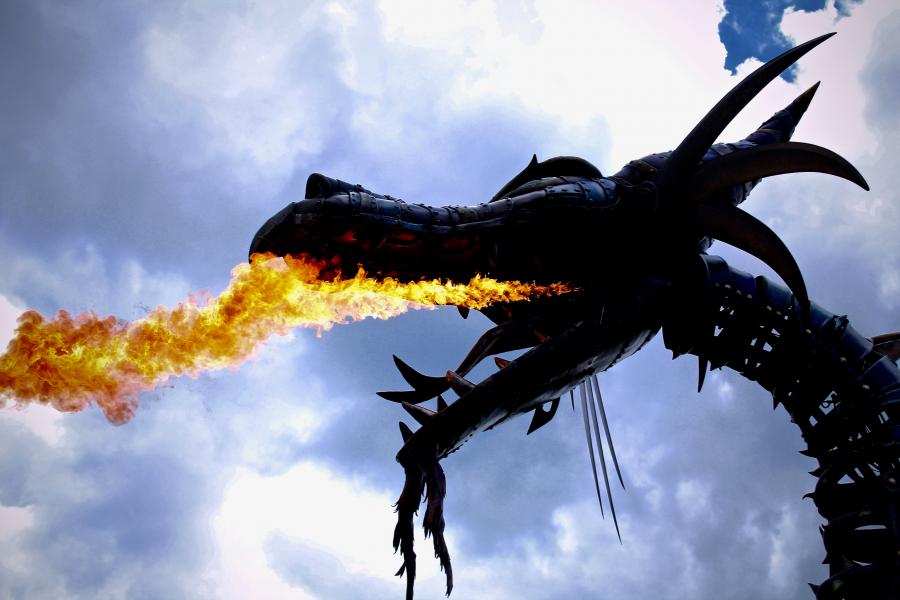
Image 1: an example of spectacle at Disney World
Disneyfication has been defined in two ways in the past. Primarily, it has been defined as spectacular, meaning that it elicits a strong emotional response (usually giddiness or excitement) without presenting something "real" or provoking per se. An example of this could be the dragon above. If it were just a normal iron dragon on wheels, it would not be so spectacular. The fact that it breathes fire causes the audience to have strong, even emotional reactions, which is what renders it truly spectacular. However, it is still safe. It gives the illusion of danger, which generates excitement while still being safe.
Another way in which Disneyfication has been defined is as a form of cultural imperialism. In this definition, Disney is a force that Americanizes other regions. An example of this would be the spread of the English language through Disney movies.
In this article, I embrace the former definition of Disneyfication. This is because I recognize how Disney shapes local products to fit into their Parks, which is achieved by spectacularizing them. This means Disney does not merely americanize as they do use foreign culture and let it influence both their foreign and American Parks. Thus, Disney indexicality is linked to spectacle and an effort to achieve balance between American and foreign cultural forces. Disney should be viewed as an integrated spectacle.
The statement "Disney seems to sell strangeness in a disneyfied jacket" then means that they sell ideas often foreign to their customers by making them spectacular. This can again be understood through the example of the dragon pictured above. Most people are not extremely familiar with dragons, but presenting a fake dragon that breathes fire is bound to create an emotional response. This way it is part of a show: it is fun and safe, and therefore it sells. Disney tries to make things childproof, non-offensive and spectacular. But what does this mean? The following quote that relates to Hong Kong Disney answers this question:
“In our conversations, many respondents always used Disney catchphrases such as ‘CMs’ (cast members, meaning HKDL workers), ‘guests’ and ‘good show’ to describe their work. Many respondents remembered the ‘four keys to Disney quality standards (safety, courtesy, show, efficiency). Disney orientation helped my respondents.” (Choi, 2012)
This shows that Disney itself gives a twist to their product. It is a brand. Their safety, courtesy, show, and efficiency "keys" are part of this brand. By extention, one can say that Disney indexicality is exactly this: safety, courtesy, show, and efficiency. These are the things that label a Disney Park as Disney. This, in turn, connects with the spectacle. The spectacle itself can be hard to define as it pertains to merely eliciting an emotional response without per se being real. However, these four values - safety, courtesy, show, efficiency - clarify how they achieve this spectacle in the Parks.
The things that make Disney Parks feel "Disney" are safety, courtesy, show, and efficiency
It thus becomes evident that it is not just global and local forces the shape Disney's products, but the company's indexicality itself also plays a major role. Products are disneyfied towards being spectacular by showing the four key elements of safety, courtesy, show, and efficiency. Disney as a force in this respect should not only refer to their intellectual properties (e.g., their filmography). Some of their influences are present entirely in the atmosphere or general architecture of their Parks. Those are not derivative of their movies or other media. The things that make Disney Parks feel "Disney", i.e. what creates the Disney indexicality, are safety, courtesy, show, and efficiency, not just the tie-ins to Disney movies.
Change for contextualizing universes
So far, we have seen that Disney must adapt to the places where their Parks are located. But how does the company do this? A couple of examples can shed light on this question.
The primary example is that of Mainstreet USA. This is the entering area in each of the main Parks at the Disney resorts. They are almost all themed to look like a turn-of-the-century American town. However, there are still distinct differences. In other words, there are accents in a general model. All instances of Mainstreet USA differ in some ways, but they all display common characteristics that are enough for them to be recognizable as Mainstreet USA; that is, they adhere to the notion of enoughness (Blommaert & Varis, 2015).
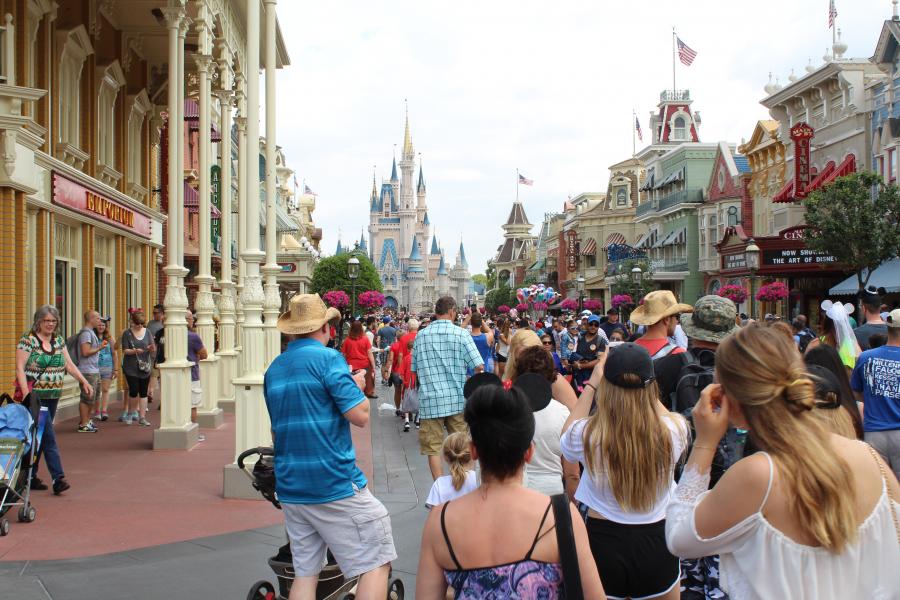
Image 2: Mainstreet USA in Florida
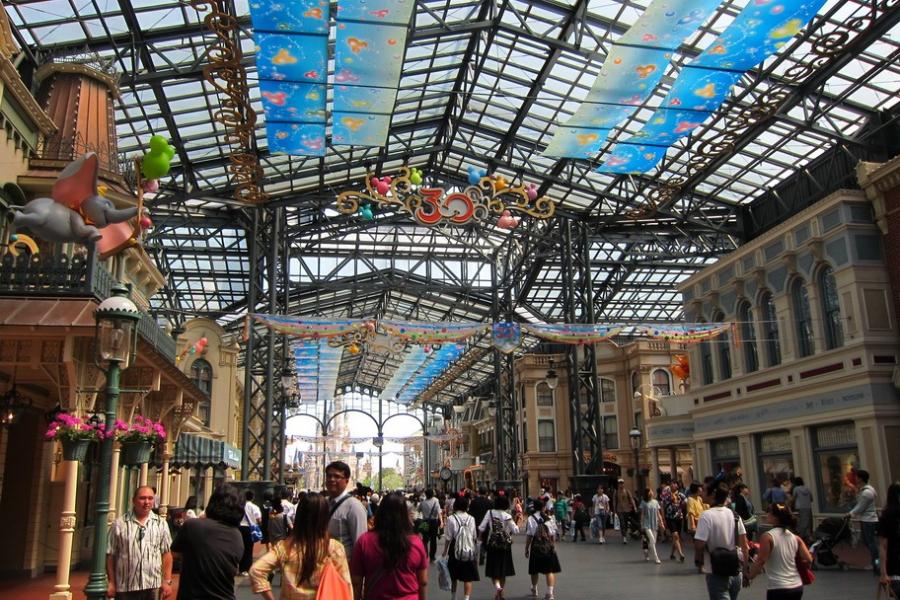
Image 3 Tokyo`s version of mainstreet
These changes range from subtle to dramatic. The most obvious example of radical change is the totally different theme found in Tokyo. As the Japanese have a rather negative image of the early twentieth century, Disney opted for a more Victorian theme in Tokyo. Thereby, we can see how the perceived meaning of a sign changes through different contextualizing universes. An early twentieth century Mainstreet would be pleasantly nostalgic for a US audience, but it would remind Japanese audiences of fascism. Contextualizing universes are the frames of reference used to interpret the world by an individual, which are influenced by personal experience, education, and —most importantly in our case— culture.
Another example of a local change is the absence of an American flag in France. Overt patriotism like this is frowned upon in Europe, more so than in the USA. Therefore, the flag would not have been a good fit for audiences in France. Here we see that the same idea is still used: namely, a Disneyland-style Park with a Mainstreet type opening. It is, however, changed to fit the location.
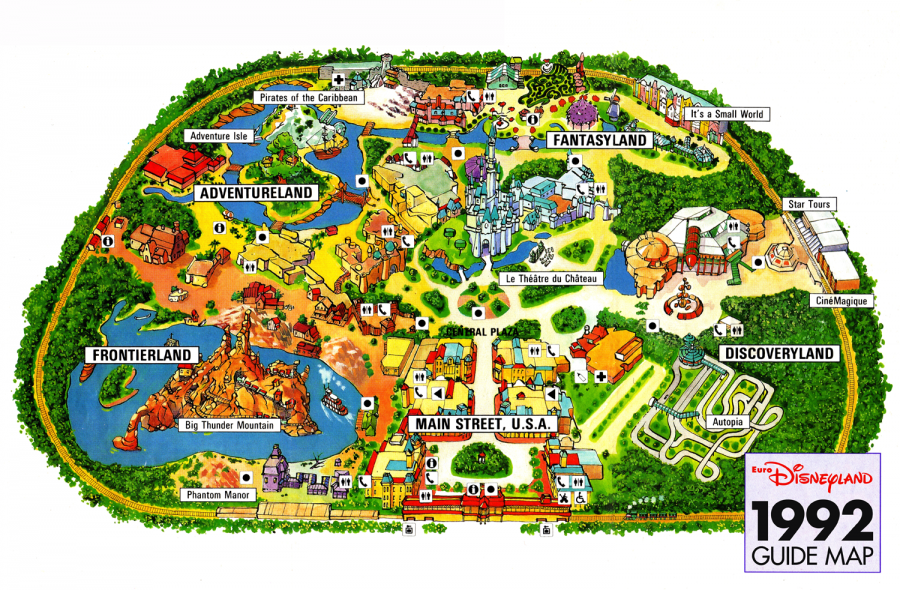
Map Disneyland Paris with no Liberty Square present
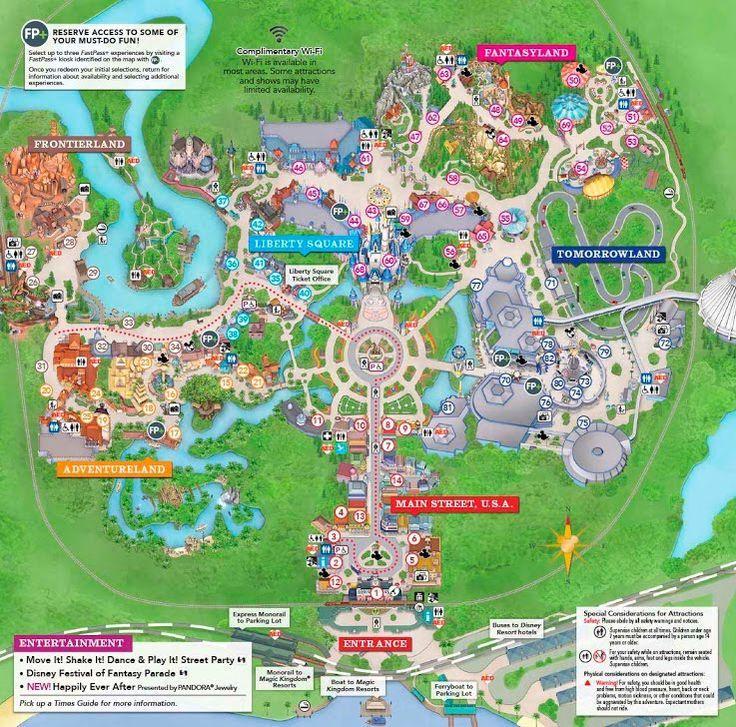
Map Magic Kingdom in Disney World in Florida with Liberty Square Present
Another overt change that signifies a difference in accent pertains to the absence of the Liberty Square Land from the non-American Parks. This is logical as this particular Land refers to an element of American history and culture that is not common knowledge outside the USA, and would therefore not be comprehensible to another audience. It would not fit into the contextualizing universe of an average customer at all. So, the general idea of a Disney Park is fit with an accent (Blommaert & Varis, 2015).
These have all been examples of changes to the Parks in non-US destinations. However, Disney also often imports ideas from their foreign locations to the US. One of these is the area of ToyStory Land that debuted in Paris. An American version opened later in Orlando in 2018. The ToyStory Lands have extremely similar aesthetics and are based on the same movies although they also differ.
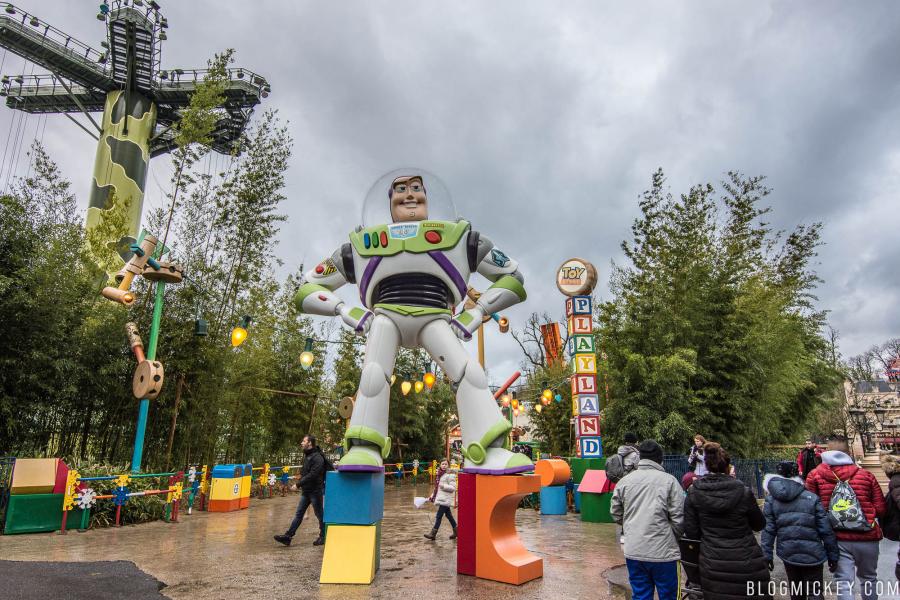
Image 4: Toystoryland in Paris
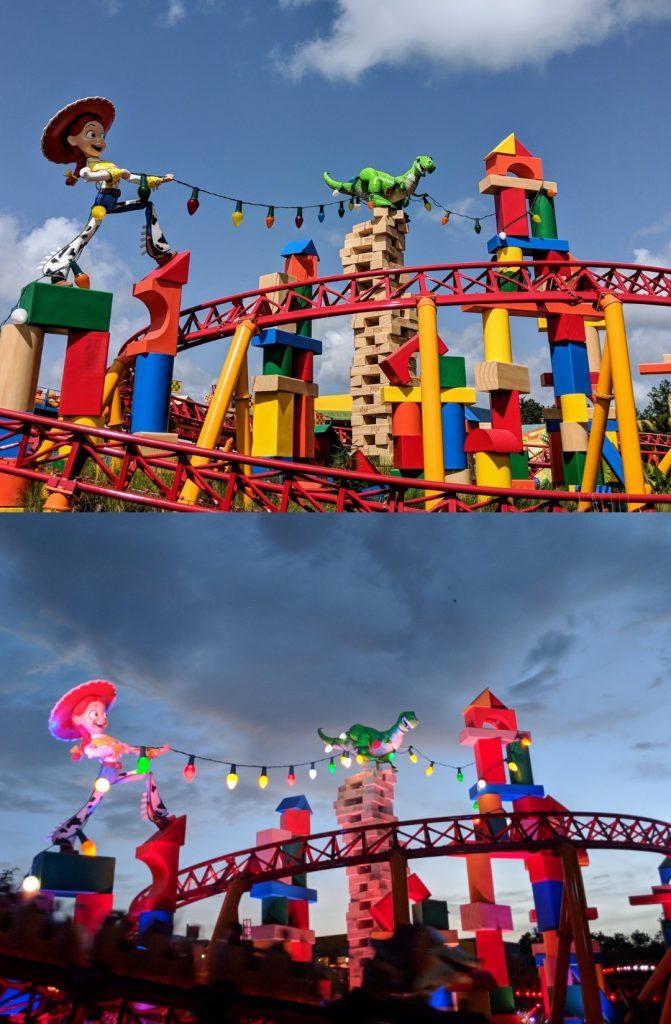
Image 5: Toystoryland Florida
More specifically, the Paris version has foodstuff and attractions that have the feel of European theme parks. Examples are the dropping towers and a caterpillar rollercoaster. The Florida version has more US-oriented attractions: spinning saucers, a small rollercoaster, and a 3D interactive dark ride, a moving kart ride where the user sees artificially-generated environments and interacts with them. Further, the US version is also more colorful than the Paris version. This was necessary because while the EU concept of a ToyStory Land would be successful in the US, the foodstuff and attractions would not fit into the contextualizing universes of the customers there. Again, a common general idea has adaptive elements.
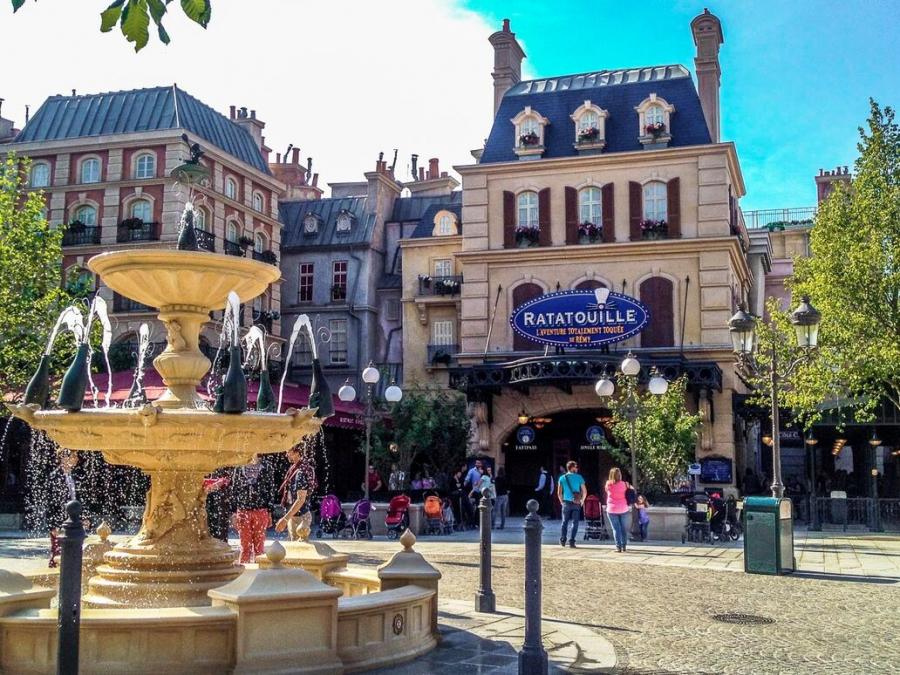
Image 6: Ratatouille land in Paris
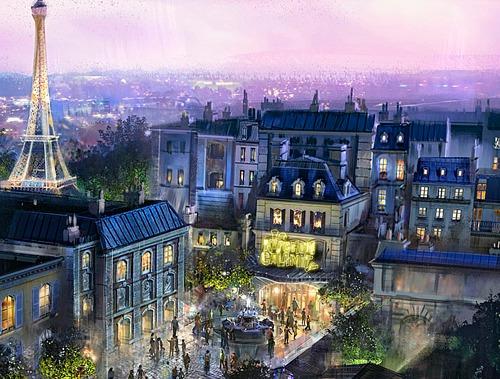
Image 7: concept art for renovation of EPCOT`s France in Florida
Another less subtle instance of change is the France-themed part of DisneyWorlds’ EPCOT. This part of the Park is supposed to feel very similar to the Rattatouille-themed area in Paris. They both feature or will feature (as the Florida version is currently under refurbishment) French cuisine and rides inspired by it. However, an American audience might want to order different food items than a French one. Crèpes and croissants will be fine as will be most of the desserts, but some dishes like particular French cheeses and a multitude of wines that are on the menu in France would not do so well in Florida. This is because the US simply does not have the same food culture as France. Disney Parks could take a risk by assuming their guests want a new and authentic experience. However, as Disney wants to maximize its profit, they might prefer to adapt, which shows that the contextualizing universes of their customers are taken into account. Thereby, the overall area is still French-themed but also accented to fit American audiences.
Disney phenomena accented
What we see in all these examples is that the contextualizing universe of the guests influences the ways in which a certain idea is implemented. In other terms, the imagined audience influences the message. The imagined audience is the people that the sender, in this case, Disney thinks the message, the Parks, will reach. This means that the dominant culture in a place influences the way in which this non-cultural and commercial item is made. It is still based on the same general idea, but the accents are different.
Therefore, in this case, soft or cultural globalization and the hard or economic globalization of a product are connected. The product is the Park. Parks spread globally to make money. But, in order to be successful, they must adapt. This manifests as a culture scape in the way Appadurai would describe it.
Soft and hard globalization influence one another
So how does the product change? It changes in ways that can fit the contextualizing universe of the guests. Their contextualizing universe is their frame of reference that is in this case mainly shaped by culture. This adaptation is made on a template on which accents are changed. Accenting is necessary to make sure the intended message comes across. The Parks themselves, in turn, are a global means of making money. In layperson's terms: Disney adapts its ideas in ways that their average customer will be able to enjoy form within their frame of reference.
Combining Disney Parks with global and local artifacts
The conclusions that can be drawn from the above form one cohesive idea: namely, that Disney Parks and their ideas are culture scapes. This means that the Parks are found in multiple locations, but are still generally the same thing adapting to each location. Disney wants to globalize its Parks. To have economic success they must have a balance between Disney elements, American elements, and local elements. Disney thus adapts its Parks so that the contextualizing universes of the guests are taken into account. This means that all these Parks must fit the title of Disney Park (displaying, for example, safety, courtesy, show, and efficiency), but at the same time they must also adapt to a certain location's culture. They must carry enoughness, but are also accented. Disney often also imports ideas from its foreign Parks to the US in that same vain of combining enoughness with accent like in the case of ToyStory Land.
Disney Parks and their ideas are culture scapes in Appadurai's sense
Finally, the ideas within the Parks also constitute culture scapes in Appadurai's sense. They are phenomena that spread globally in a relatively uniform way, but must adapt to each place. This supports the idea that Disney Parks are not merely an americanizing force, but a mixture of cultures with its own identity. There is no homogenization; instead, there is a scape with local adaptations.
References
Appadurai, A.(1996). Modernity at large. Minneapolis, United States of America: University of Minnesota Press.
Blommaert, J. &Varis, P. (2015). Enoughness, accent and light communities: Essays on contemporary identities.Tilburg, The Netherlands: Tilburg University.
Choi, K.(2012), Disneyfication and Localisation: The Cultural Globalisation Process of Hong Kong Disneyland.UrbanStudies, Volume(49(2)),383-397. https://doi.org/ 10.1177/0042098011402234